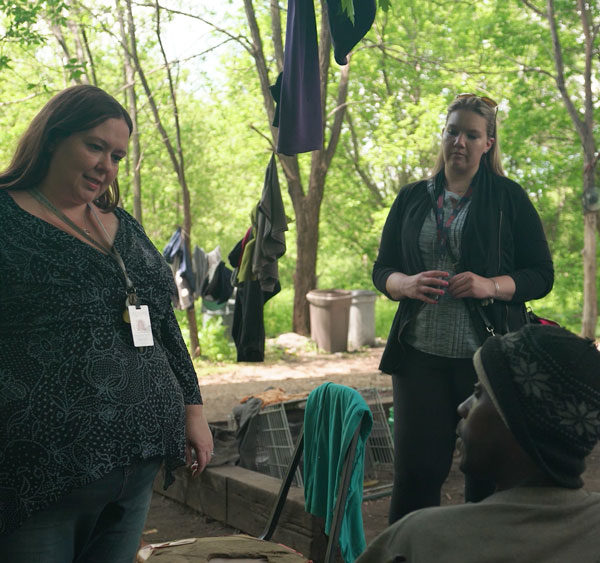Can you imagine living outside so long that you’re afraid to come in? What happens when sleeping inside feels even scarier than staying on the streets? When Angie Walker and her team joined our Built for Zero initiative and set out to end homelessness in Rockford, Illinois, they knew they would need to find answers to these questions.
Finding homes for people experiencing chronic homelessness isn’t just about resource challenges. Outreach workers also have to convince people who have given up hope that finding housing is a real possibility. Some are wary that there are unbearable strings attached. Others talk about their friends on the street and what it will mean to leave a familiar group. Others have had so many disappointments— outreach workers who didn’t follow up on promised help with housing, landlords who mistreated them— that they are skeptical that the offer of housing could be real.
In Rockford Angie knew a group of men who had lived on the streets for as long as eight years. This group lived in tents and abandoned buildings, sometimes seeking shelter in concrete construction tubes. They were on the city’s real-time, by-name list of the chronically homeless, and the Rockford team was determined to house them. But this group was a special challenge. The men insisted that they weren’t interested in Angie’s offer of housing.
But Angie suspected they were really just doubtful that her offers of help would amount to anything. Those who have been homeless the longest have generally been offered emergency services time after time without much changing for them. The notion of a real solution, housing, would be radical
Angie knew it was her responsibility to find a way to house these men. She suspected that if they experienced a taste of what it was like to sleep inside again, they might be willing to accept more permanent housing.
The opportunity to test her instinct arose from an unlikely place: the Chicago Cubs. One day, Angie overheard the men talking about the upcoming World Series in which the long-suffering Cubs would be playing. One member of the group was upset that he couldn’t watch because he didn’t have access to a TV.
Rockford became the first community in the country to end both veteran and chronic homelessness.
Angie made an offer on the spot: come inside and watch the Series. She knew she could get them into a nearby short-term residency hotel, so she invited the men to stay there and watch the games. It worked. The men put aside their discomfort, moved inside, and watched the Cubs win the World Series for the first time in 108 years.
This taste of housing warmed the men to the idea of living indoors again. They asked to stay in the hotel a bit longer. Soon Angie and her team were moving them into permanent apartments, ending their homelessness for good.
Housing the hardest-to-reach people in a community takes creativity and a refusal to give up. Outreach workers must figure out what really matters to each person and then focus on delivering those things. It’s the very essence of human-centered design. Success depends on a willingness to try new approaches, including ones tailored to specific individuals whose fears or circumstances present unusual challenges.
“Every time I talk to the Rockford team, there’s something new they’re trying,” says Julia Parshall, an Improvement Advisor on the Built for Zero team who works closely with Rockford. “They understand that homelessness is a complex problem, and they are constantly learning what works and adapting.”
Last year Rockford became the first community in the country to end both veteran and chronic homelessness. Since then they’ve been working to sustain this achievement while expanding their focus to youth homelessness.





